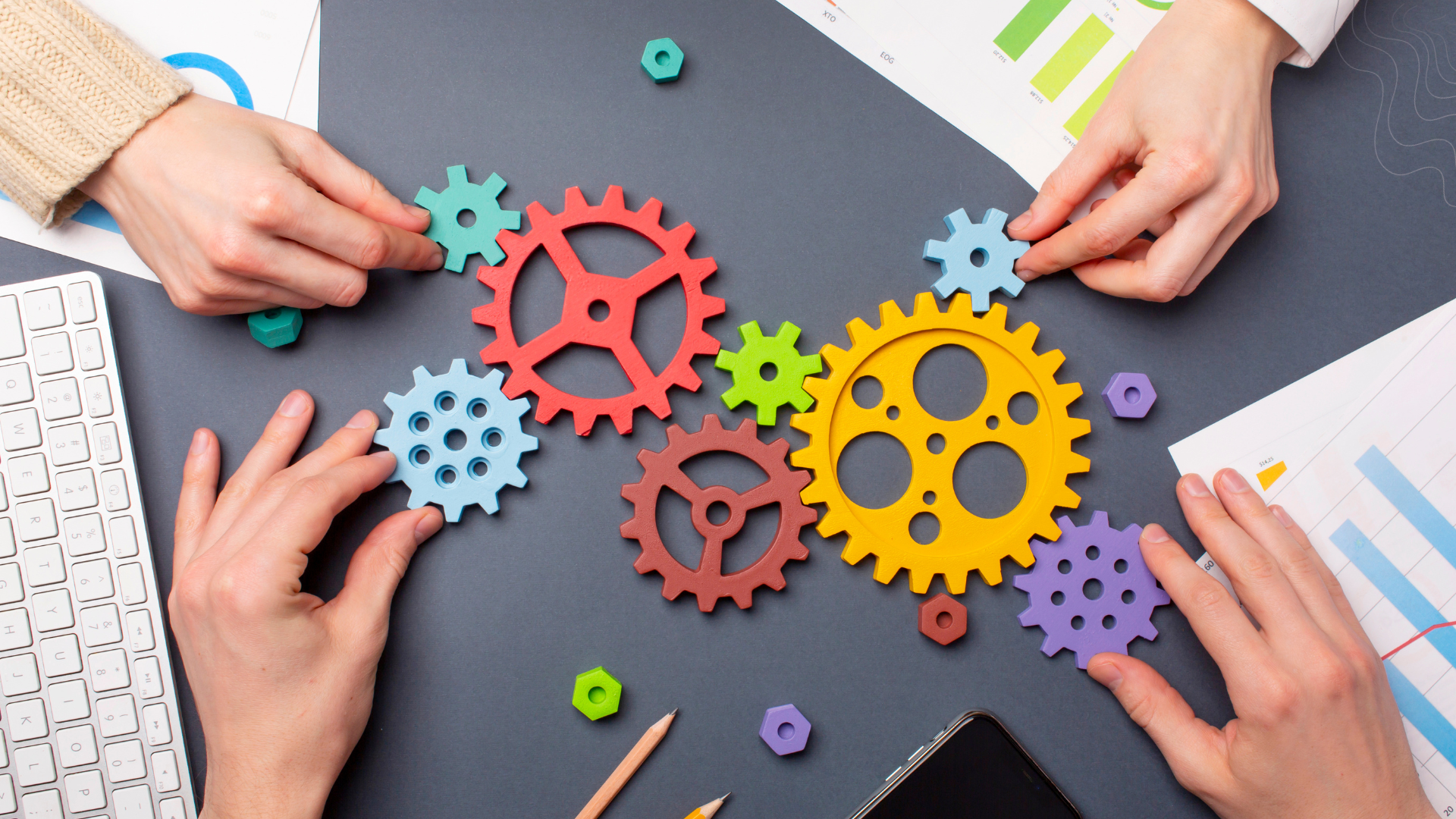Demonstrating value and ROI for engagement activities.
— Events and Communications Specialist
Making engagement a priority when time and financial goals along with a very extensive geographic distribution make it very hard to be taken seriously by employees and managers.
— Engagement Manager
I believe in employee engagement but need to support ROI from it to management.
— Tech Consultant
ROI.
— Manager, Corporate Communications
If there were an award for the Buzzword of the Year, employee engagement would win several in a row. I would even enter it for the Buzzword of the Decade. Employee engagement has been so widely discussed in the last 5-7 years that it has created a new job market. Today we have managers and specialists of employee engagement, along with an army of consultants wielding tools and advice; and there is no sign of it going anywhere.
What do you mean, “it’s not going anywhere,” Tim?
Employee engagement professionals are here to stay. But so are disengaged employees who, as of today, make up most the American workforce. It seems like a golden opportunity for HR and corporate communications strategists. And while some companies are plunging in head first, others are waiting on the sidelines.
What are they waiting for?
According to multiple testimonies from the Biggest Challenge at Work survey, they are waiting for proof that employee engagement is good for the company’s bottom line.
Really? Are we talking employee-engagement skeptics? Or employee-engagement deniers??
Neither, actually. I believe managers get the concept of employee engagement. However, before they approve specific employee-engagement initiatives, they might ask questions like: How do you know this will work for us? How will we know it’s working? And: What’s in it for me?
These are all legit. Any decent office politician should expect these questions and have answers ready. If you need to brush up on your office politics, check out my recent post.
Your boss could also be legitimately distracted by pulling in end-of-the-quarter revenues and other such upper management activities. This is one reason our Engagement Manager thinks her company doesn’t take employee engagement seriously. But is she being fair? Someone high up the food chain has to be serious about it for her position to exist!
Perhaps she meant frontline managers, who, along with rank-and-file, get overwhelmed by the daily to-do. Notice how this doesn’t matter in her case. Why would a company hire an employee engagement manager if employees and their immediate supervisors already cared about engagement?
Nationwide stats show that they don’t care. It’s her job to come up with a solution, and it’s the management’s job to question it. She needs to be patient and build her case using the language her boss understands and can pitch to his boss. If you need help to get your boss’s ear, you may find this article useful.
Like an experienced marketer, you should start with the problems that are keeping your boss’s attention away from employee engagement. Is he struggling to meet his financial goals? Great! Employee engagement has been shown to:
- Bring new customers
- Grow repeat business
- Improve quality
If you need more specifics, stay tuned. In the next three posts, I will go through each of these topics in detail. These are powerful levers for any business. The best part is that they can produce results in the short term. And, unlike some other P&L strategies, the effects are long lasting.
Partner with business managers to pick the best opportunity to capture lost revenue or cut unnecessary costs through higher engagement. But first, do me a favor. As you reach out to build consensus for your project, don’t use the words “employee engagement.” Employee engagement is a technical term; it’s for HR geeks, like you and me, who can’t wait to get our hands on a new piece of insightful psychobabble. If your business manager is not like that, you can still talk to him about engaging people. Just don’t use those words.
If you wanted your kids to do something good for their brains, you wouldn’t say: “Hey, kids, wanna do an enrichment activity?” Instead, you’d say: “Wanna go to the science museum?” Or better yet: “Wanna see a 3-D movie about dinosaurs?” See what I mean? Talk to the managers about their most important business goals and how you can help employees focus on what’s important.
Now we’re getting to the point about ROI. If you play your cards right, the value of your project should be apparent, and the ROI conversation should never take place. I’ll explain why.
Return on Investment, or ROI, is a measure of project profitability. Companies use it to choose among growth avenues. For example, if you need to decide whether your plant should manufacture gadget X or gadget Y, you would project revenues and costs from both gadgets and pick the one that gives you the higher ROI.
Most companies also set a minimum ROI to meet investors’ growth expectations. So if neither X nor Y meets the minimum ROI, the company might choose not to expand organically and make an acquisition instead.
It doesn’t work the same with in-house projects, like changing performance metrics or upgrading your intranet. There are too many unknowns. And your investment goes toward your infrastructure and your people, not into business operations directly. Besides, the most successful employee engagement tactics are based on intangibles, like trust, inspiration, and good will. It’s not a goodwill gesture if you need to see an ROI first, is it?
Not everyone will agree with me. Some people are militantly pro-ROI. Like this guy, for example:
“Just as hospitals don’t prescribe homeopathic medicine, HR departments should not base their talent management practices on the strengths movement, the MBTI assessment, or the latest Malcolm Gladwell book. Unless they are not interested in demonstrating ROI or appearing more credible to the rest of the organization. HR must ignore populist management fads from self-proclaimed business gurus. The toxic leadership BS movement is harming HR departments’ credibility and effectiveness.” (Tomas Chamorro-Premuzic, HR must ignore populist management fads from self-proclaimed business gurus, Management Today, October 29, 2015)
Wow, “toxic leadership BS”! He and I agree on one point: don’t take something you read in a book—even my book—and bring it to your boss. Do your work to translate the principles into concrete actions suitable to your company and your team.
Now, suppose you’ve done all that. How does your boss know whether it’s a good idea? He doesn’t, and calculating a bogus ROI will not persuade him either. Instead, have a meaningful discussion of pros and cons. If you are pitching outside of HR and Comms, say to a general manager or a CFO, consider how your idea will impact their work. Will the new system of promotions help the GM develop his staff? Does the new intranet have finance-friendly features?
Of course, if you see short-term gains from your idea, point them out. Maybe the new system will eliminate licensing fees or maintenance costs associated with the old one. One company I know changed its policy to provide unlimited time off. It took HR all of 30 seconds to convince the CFO. All they had to do was to show him quarterly payouts due to unused vacations.
Many companies consider unlimited time off to be an engagement tool. It takes away a major incentive to show up to work sick, distraught, burnt out, or otherwise unmotivated. Besides, people like the sound of “unlimited vacations,” and new hires don’t have to wait years to take a break from work. So it’s good for recruitment and morale. This particular CFO wasn’t focused on those things, but the prospect of instant credit to his bottom line struck a nerve, and the new policy went into effect immediately.
Special cases aside, your project shouldn’t hinge on petty cash. A wise go/no-go decision derives from the potential upside and downside, which are often as obvious to a trained eye as they are difficult to quantify.
In many cases, the best way to estimate the results is to pilot the project in one location before rolling it out to the entire company. Using a pilot limits the downside. It also lets you work out the glitches and refine your idea before the company makes a significant investment in it. Finally, it provides relevant real-world data—if all goes well—to support your case. Here’s an interesting MIT study on fool-proofing your pilot.
For a pilot project to strengthen your overall case, you must decide in advance how you will measure the results. Most likely it’s not going to be anything grandiose, like ROI, but a simple productivity or quality metric. For a detailed discussion of employee-engagement metrics, read the last post, How to Make Yourself More Visible and Get Promoted
If you’re in charge of Engagement and Communications, your area of expertise may be a blind side for many managers. Be patient and keep promoting your cause. Your company cares about it. Otherwise, they wouldn’t have hired you. Don’t get hung up on numbers and consider the unknowns as carefully as you do the known benefits and costs. To reduce the risk, start small and track the results with appropriate metrics. Learn from mistakes and build on your success.
____
If you like ROI, you might like my book, because you’ll learn how the richest companies on Earth invest in people, relationships, and culture.












 info@axerosolutions.com
info@axerosolutions.com 1-855-AXERO-55
1-855-AXERO-55


